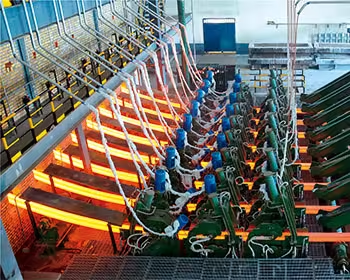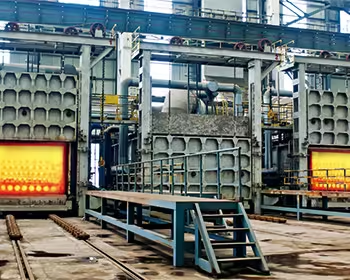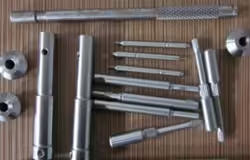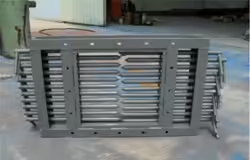
6 Worst Square Tube Steel Maintenance Mistakes
Table of Contents
Introduction

Square tube steel is the unsung backbone of modern fabrication—used in hand‑rail frames, data‑center cable racks, agricultural irrigation booms, solar‑panel mounts, mezzanine catwalks, recreational vehicle chassis, and hundreds of other load‑bearing or architecturally appealing structures. Its closed‑section geometry provides exceptional torsional rigidity at a fraction of the weight of comparable solid bar stock. Yet that hollow profile also hides corrosion, stress risers, and debris. Failure to maintain square tube steel undermines safety, invites expensive downtime, and shortens service life by years.
This comprehensive guide unpacks the six worst square tube steel maintenance mistakes. Each section blends field experience, academic research, and step‑by‑step checklists so facility managers, welders, and civil engineers can implement a proactive strategy. We explore inspection schedules, coating science, welding best practices, structural health monitoring, cleaning protocols, and maintenance planning. A mid‑article comparison table ranks monitoring technologies on cost and accuracy for quick reference.
The keyword square tube steel appears throughout this article in a natural, contextual flow—well under the 3 % ceiling—to aid SEO without sacrificing readability.
Mistake 1: Skipping Regular Corrosion Inspections
Corrosion acts like an invisible tax that compounds over time. In square tube steel, moisture often becomes trapped inside sealed sections, creating an oxygen‑poor but electrolyte‑rich environment perfect for galvanic attack. According to a 2023 ASTM white paper, up to 40 % of corrosion losses in hollow structural sections remain hidden until catastrophic failure occurs.
Hidden Corrosion Indicators
- Thin rust lines bleeding from vent holes or end‑cap seams after rain events.
- Tapping sounds that change from crisp to dull when square tube steel walls thin below 60 % of nominal thickness.
- Elevated chloride readings (> 50 ppm) on exterior paint film measured with a Bresle patch.
Proactive Inspection Roadmap
| Task | Frequency | Tool | Accept/Reject Criterion |
|---|---|---|---|
| Exterior visual sweep | Monthly | LED flashlight, 4× loupe | No blistered paint > 5 mm |
| Ultrasonic wall‑thickness grid | Semi‑annual | 5 MHz dual‑element probe | ≥ 85 % design thickness |
| Interior borescope photography | Annual | 8 mm articulating scope | No pitting > 0.3 mm depth |
Document thickness readings in a cloud spreadsheet. Trend lines that drop more than 1 % per year prompt immediate remediation budgeting.
Field Case: Telecom Tower Cross‑Bracing
A Midwestern telecom firm relying on 100‑mm square tube steel braces noticed paint bubbling but deferred inspection. A $12,000 NDT survey later exposed 1.2‑mm wall loss along the windward faces—enough to compromise design safety factors during ice storms. Routine ultrasonic checks could have cost just $800 annually and flagged the issue three years earlier.
Mistake 2: Neglecting Protective Coatings on Square Tube Steel

Protective coatings guard square tube steel from moisture, salts, fertilizers, and industrial pollutants. Ignoring surface maintenance invites rapid under‑film corrosion, loss of cross‑section, and eventual structural failure.
Coating Failure Culprits
- Chalking and UV degradation in single‑pack alkyd finishes after prolonged sun exposure.
- Holiday defects—microscopic pinholes that bypass cathodic protection and accelerate pitting.
- Edge‑thinning at cut ends where paint naturally retreats, exposing raw square tube steel.
Best‑Practice Coating Stack‑Up
- Grit‑blast to SSPC‑SP10 near‑white metal surface profile of 50 µm for optimum anchor pattern.
- Apply 75 µm zinc‑rich epoxy primer to impart galvanic protection if square tube steel is breached later.
- Add 125 µm high‑build intermediate epoxy coat for barrier density.
- Finish with 60 µm polyaspartic topcoat for UV durability and color stability.
Touch‑Up Protocol
- Feather sand surrounding intact coating 100 mm beyond the defect.
- Solvent wipe with methyl ethyl ketone to remove contaminants.
- Reapply primer/topcoat with airless spray at manufacturer‑specified DFT.
A meticulous coating program extends the functional life of exterior square tube steel well past 30 years—even in coastal or industrial atmospheres.
Mistake 3: Performing Improper Welding Repairs on Square Tube Steel Frames
When modifications or crack repairs are needed, welding becomes inevitable. However, welding square tube steel incorrectly can cause heat‑affected zone embrittlement, burn‑through, and distortion, all of which undermine load capacity.
Pitfalls and Remedies
| Welding Issue | Root Cause | Preventive Action |
| Burn‑through | Excessive amperage on thin walls | Pulse‑spray MIG or TIG with backing bars |
| Porosity | Contaminated surface, moisture | Preheat to 120 °C; grind paint 25 mm from joint |
| Crater cracks | Premature arc break | Use run‑off tabs and crater‑fill sequence |
| Lamellar tearing | Multidirectional shrinkage | Reduce joint restraint; use butter passes |
Filler Metal Selection
For carbon‑manganese square tube steel (ASTM A500 Grade B), ER70S‑6 wire or E7018 stick electrodes achieve tensile strengths comparable to base metal. Post‑weld magnetic‑particle inspections verify surface integrity, while phased‑array UT checks for subsurface lack of fusion.
Stress‑Relief Tempering
On wall thicknesses exceeding 8 mm, temper at 600 °C for one hour per 25 mm thickness to diffuse hydrogen and alleviate residual stress. Failure to stress‑relieve can reduce fatigue life by up to 25 %.
Mistake 4: Ignoring Load Deformation Signals in Square Tube Steel Structures

Deflection monitoring provides real‑time feedback about structural health. Square tube steel beams that exceed L/240 deflection—or any manufacturer‑specified limit—signify overload or wall loss.
Choosing a Monitoring System
Below is a side‑by‑side comparison of popular displacement‑tracking tools placed midway in this article to maintain reader engagement.
| Monitoring Method | Cost per Unit (USD) | Resolution (mm) | Data Interval | Ideal Application |
| Manual String‑Line | 2 | ±3.0 | Ad hoc | Short span, visual checks |
| Dial Indicator | 45 | ±0.02 | Weekly logs | Lab prototypes, jigs |
| Laser Displacement Sensor | 320 | ±0.01 | Hourly cloud upload | Crane beams, gantries |
| LoRaWAN Tilt Node | 140 | ±0.1° | 15 min | Remote agriculture bridges |
Using two laser sensors spaced 1 m apart on a square tube steel mezzanine cross‑beam enables triangulation of mid‑span sag. Alarm thresholds can be programmed into SCADA systems to send SMS alerts at the first sign of overstress.
Data‑Driven Maintenance
Trend lines that exceed 95 % of allowable deflection for more than two consecutive data points trigger load‑shedding, welding reinforcement, or replacement. This predictive approach saves thousands by intervening before catastrophic failure.
Mistake 5: Using Harsh Cleaning Chemicals on Square Tube Steel Surfaces
Cleaning is vital to remove salt, fertilizer spray, and air‑pollution deposits that accelerate corrosion. Yet overly aggressive chemicals or high‑pressure washing erode protective coatings and push moisture into joints.
Safe Cleaning Protocol
- Rinse loose debris with a low‑pressure garden hose.
- Apply pH‑neutral detergent (pH 6.5–7.5) diluted 1 % in warm water.
- Agitate gently with soft‑bristle brushes.
- Rinse thoroughly and dry surfaces to avoid water spots.
Rust‑Stain Spot Treatment
A paste of sodium bicarbonate and distilled water can be applied for 30 minutes, gently lifting light flash rust without scratching paint. Rinse and apply microcrystalline wax sealant to seal pores.
Chemical No‑Go List
- Hydrochloric acid > 5 %—attacks zinc primer and bare square tube steel.
- Sodium hypochlorite (bleach)—induces pitting in welds.
- Industrial degreasers containing sodium hydroxide—lifts polyurethane topcoats.
Mistake 6: Skipping Scheduled Maintenance Reviews for Square Tube Steel Assets
Maintenance plans become obsolete without annual updates. Regulation changes, environmental exposure shifts, or process upgrades alter risk profiles.
Annual Review Agenda
- Data Audit: Compare current corrosion‑rate trends against asset‑life forecasts.
- Route Optimization: Adjust inspection pathways based on new square tube steel installations or decommissioned lines.
- Budget Alignment: Update coating, inspection, and contingency budgets to reflect inflation and asset aging.
- Training: Certify technicians in new NDT methods such as phased‑array UT or guided‑wave testing.
- Documentation: Archive before‑and‑after photos and NDT reports in a centralized CMMS.
Companies that embed maintenance reviews into corporate KPIs report up to 35 % lower structural downtime and 22 % longer average service life for square tube steel assets.
Conclusion
Avoiding these six maintenance mistakes—skipping inspections, neglecting coatings, performing improper welding, ignoring deformation, cleaning with harsh chemicals, and omitting schedule reviews—dramatically prolongs square tube steel reliability. Consistent, data‑driven maintenance transforms the material from a potential weak link into a long‑term asset.
Allocate resources to preventive actions today. Your square tube steel frameworks will reward you with decades of safe, efficient performance and lower total cost of ownership.
FAQ
How often should square tube steel be inspected?
Outdoor structures benefit from monthly visual sweeps and semi‑annual ultrasonic tests; indoor dry environments can be inspected semi‑annually.
What is the best coating for square tube steel near the ocean?
A duplex system—hot‑dip galvanizing plus epoxy‑polyaspartic topcoat—delivers up to 3,000‑hour salt‑spray resistance.
Can square tube steel be galvanized after fabrication?
Yes. Provide vent and drain holes to allow zinc flow. Post‑galvanizing, plug holes with nylon caps to block moisture ingress.
How do I weld thin‑wall square tube steel without burn‑through?
Use pulse MIG or TIG at lower amperage, maintain tight fit‑up, and employ copper backup bars to absorb heat.
Which NDT methods detect internal corrosion in sealed square tube steel?
Combine guided‑wave ultrasonics for long‑range screening with borescope inspections for localized confirmation.
Does vibration affect square tube steel joints?
Yes. Cyclic vibration can loosen mechanical fasteners and initiate microcracks at weld toes. Install rubber isolators and perform regular torque checks.
How do I calculate load limits for reused square tube steel?
Subtract measured wall‑thickness loss from original design thickness, recalculate section modulus, and apply a 1.5 safety factor to account for unknown residual stresses.
What’s the lifespan of square tube steel in a fertilizer plant?
With robust inspection, coating, and cleaning protocols, service life can exceed 25 years, versus under 8 years without maintenance.
Are there eco‑friendly cleaning options for square tube steel?
Yes. Bio‑based surfactants derived from coconut or corn sugars effectively remove grime without attacking coatings or waterways.
When should I replace instead of repair corroded square tube steel?
If wall loss exceeds 40 % of nominal or calculated residual strength falls below code requirements, replacement is the safest course.






